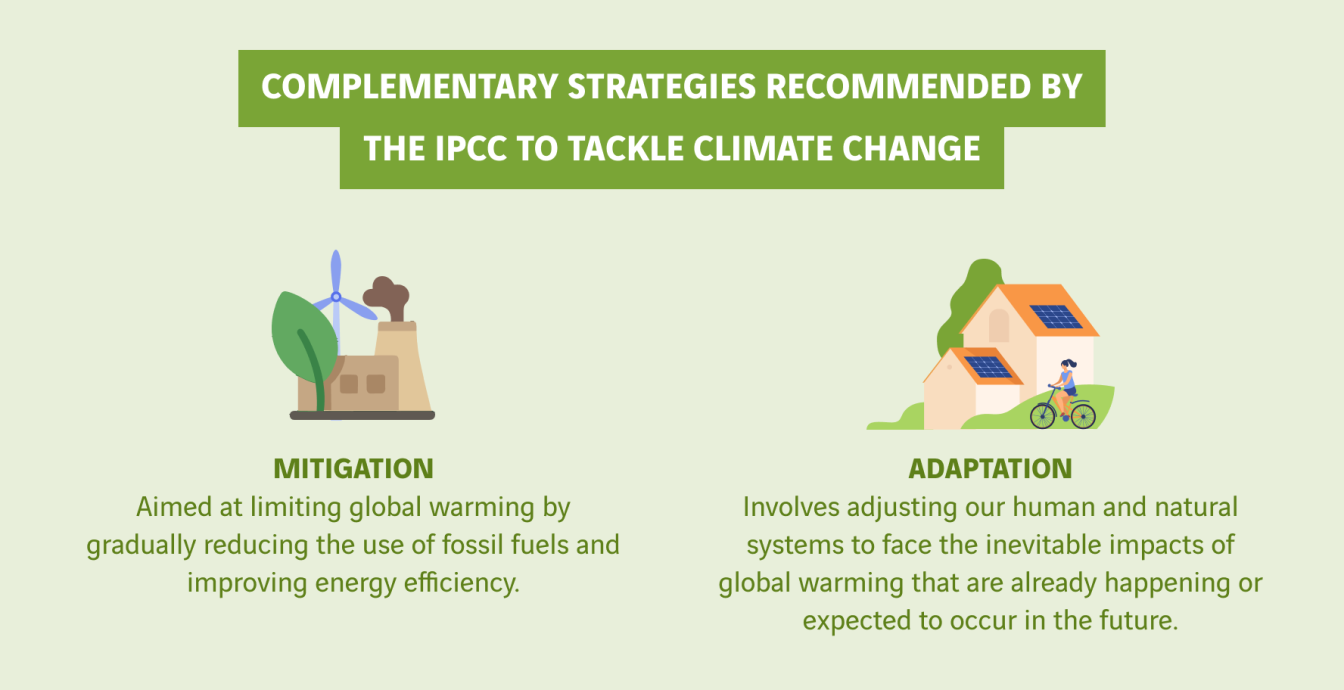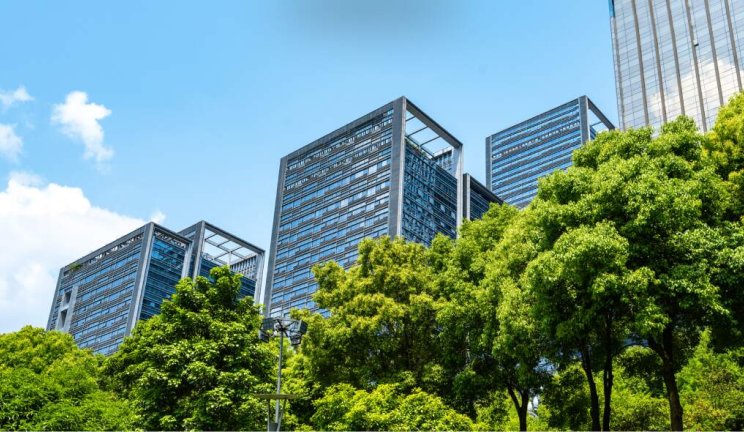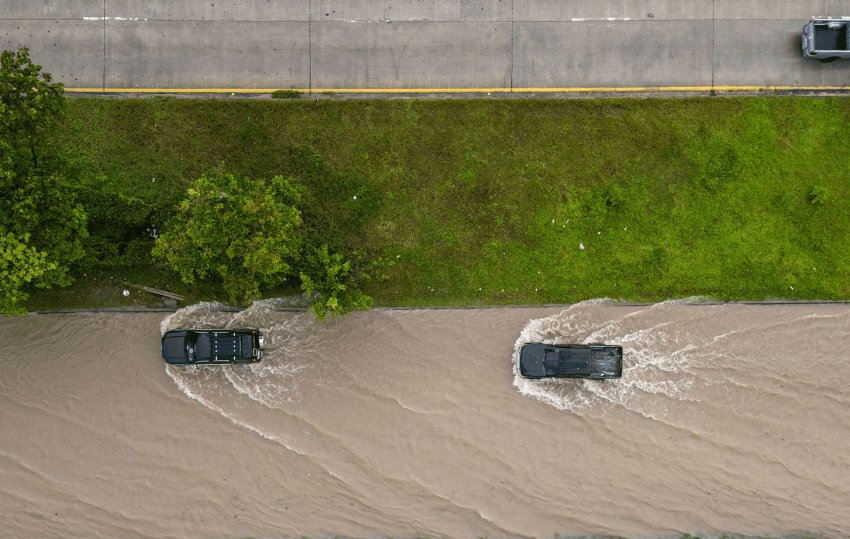
Diagnostics and prevention driving climate change adaptation.
Identifying climate change risks to ensure greater protection is one of the objectives behind the adaptation concept. From detecting vulnerabilities to preventing risks, read on for a closer look at the tools and techniques that are helping our communities, infrastructure and buildings prepare for the new climate challenges.
Dans le même dossier
Mitigation and adaptation: solutions for greater resistance
Managing the inevitable : the urgent need to adapt
According to the Intergovernmental Panel on Climate Change (IPCC), governments’ current climate policies are setting us on a path to a 3.2°C increase in average temperatures on a global scale by 2100. Some 3.3 to 3.6 billion people live in areas that are highly vulnerable to climate change. To address this situation, the IPCC recommends two complementary strategies, namely mitigation and adaptation. Mitigation is aimed at slowing down global warming, especially by phasing out fossil fuels and improving energy efficiency. Adaptation involves “making do” with the changes currently taking place by preparing society for life in a warmer world. Therefore, adaptation intends to protect populations, prepare communities (by ensuring continuous infrastructure services and other essential activities), build a more resilient economy, and preserve natural environments and the country’s heritage and assets. Basically, while mitigation is focused on “avoiding the unmanageable”, adaptation strives to “manage the unavoidable”. Adaptation may be less advanced than decarbonisation, but it is still vitally important. Every euro invested in climate adaptation projects prevents 10 euros of climate damage, bearing in mind that the global cost of such damage is estimated to be between $1.7 and $3.1 trillion per year by 2050.
+3,2°C
This is the increase in average temperatures on a global scale by 2100 caused by governments’ current climate policies.
Mapping risks to take action
Risk assessment tools are central to adaptation efforts. Among them, data analysis and mapping are valuable tools. Resallience a consulting VINCI entity is dedicated to adapting projects, cities, territories, infrastructure and their uses to climate change. For Frédéric Delafosse, who heads the entity, risk mapping is becoming essential. ResiLens, a tool developed by VINCI, allows users to navigate on a global scale and identify the Group's infrastructure exposure to climate hazards.
Mapping is the basic tool that allows us to quantify and assess changes in climate hazards across a given territory. Our clients expect educational visual representations to help them visualise the exposure of their assets. We work with geographic information systems that allow us to juxtapose a digital terrain model with infrastructure or climate-related maps. Climate maps are based on long-term assumptions. When estimating the risk of rising temperatures for example, we are dealing with some uncertainty. This requires us to proceed with rigour.
Frédérique Delafosse, Head of Resallience
Diagnostics: the first step towards resilience
Adaptation is based on three key pillars, namely a prior risk assessment (using diagnostic solutions to measure the extent to which infrastructure and buildings are vulnerable to climate change based on the typical weather conditions in their local area), preventive measures (to limit the impact of climate-related hazards), and systems for returning the situation to normal following an extreme weather event.
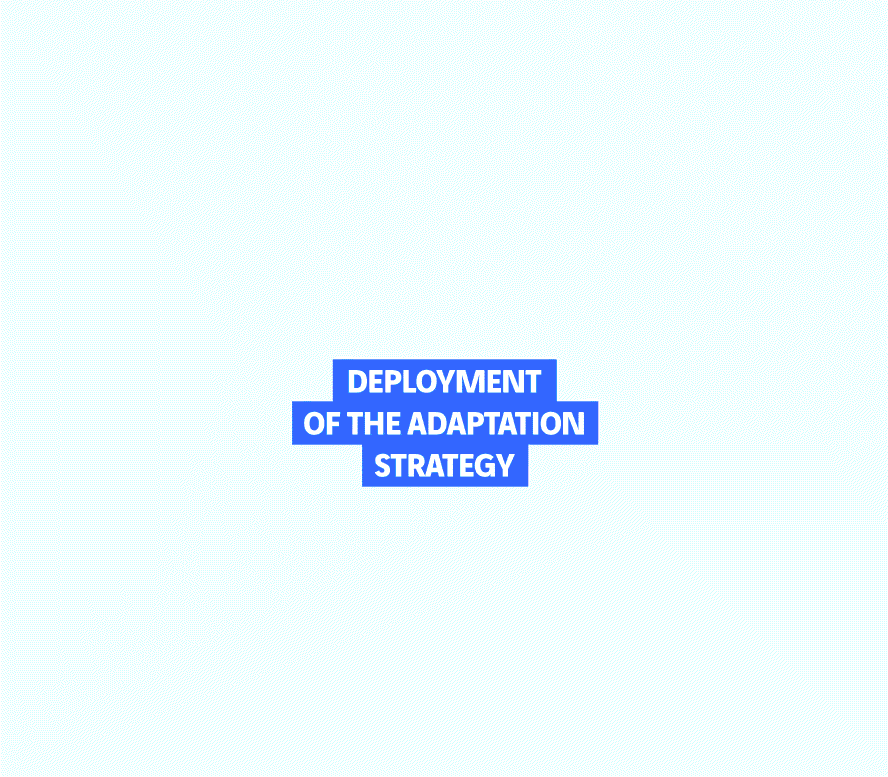
Diagnostic and prevention solutions play a major role, since they can help identify the architectural and construction parameters, adjustments and changes that are capable of making buildings and infrastructure more resilient to new climate challenges. Although biodiversity has been scientifically proven to have a beneficial effect on air temperatures, identifying how to specifically incorporate green spaces in urban development projects is not always simple. That is exactly the challenge that Biodi(V)strict® is designed to address.
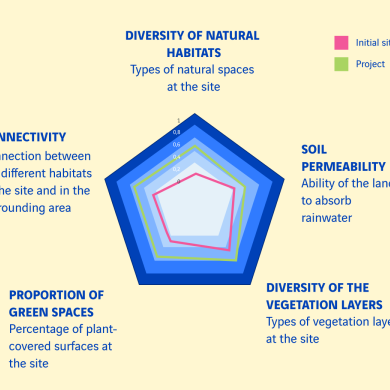
The Biodi(V)strict® predictive tool
Biodi(V)strict® was pioneered by lab recherche environnement, a scientific partnership between VINCI and ParisTech, to estimate the biodiversity potential of urban development projects and propose appropriate greening solutions. The assessment works by comparing the project against the initial site and/or other development scenarios, and by calculating five indicators. The values of the indicators and a comparison of the before and after values are key to pinpointing the main types of pressure affecting the site in terms of biodiversity, as well as revealing the associated advantages. Therefore, Biodi(V)strict® represents an invaluable decision support tool - and the first of its kind!
Another area where diagnostics play an especially valuable role is assessing climate-related risks, which includes rainwater events that are now striking with greater intensity and frequency. In light of this new trend, public authorities and infrastructure managers need accurate estimates on the potential impact of flooding so that they can take quick responsive action, limit any damage, keep people safe and adapt infrastructure accordingly. VINCI Construction and VINCI Autoroutes have designed CaledonlA to fulfil this need.
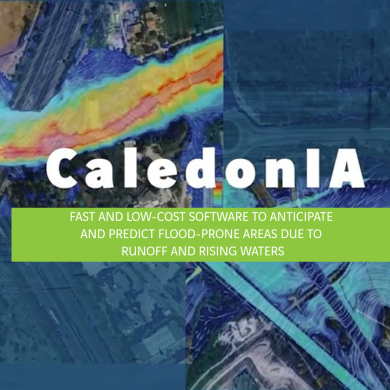
CaledonIA: a VINCI Construction and VINCI Autoroutes solution
This software system uses artificial intelligence algorithms, land models and rainfall data from Météo-France to simulate urban flooding in real time and propose simulated adaptation solutions to reinforce the resilience of the affected infrastructure. The aim is to identify risks and anticipate impacts on users, surrounding areas and facilities to ensure appropriate crisis management and inform investment decisions. This solution has already been tried and tested by VINCI Autoroutes, which is using the system to carry out regular assessments and subsequently adapt its network to reflect short, medium and long-term climate trends.
Improving resistance to climate-related hazards
Once the vulnerabilities have been identified in a given structure, preventive measures can be implemented to improve its resistance to climate-related hazards. The idea is to minimise any exposure to risks before they become a reality, such as by preparing electrical installations to withstand bad weather events or designing cities to prevent urban heat islands from developing. Most of the world’s population lives in cities, which are being pushed to the limit by climate change. This is compounded further by the need to manage rainwater: the growing number of impermeable surfaces in urban areas and ever extreme rainwater events have the effect of saturating drainage networks, thereby increasing the risk of flooding and waterway pollution. Finally, the need to bring nature back into our cities has never been so acutely felt.
92 %
of French people believe that there are not enough green spaces in the country’s cities.
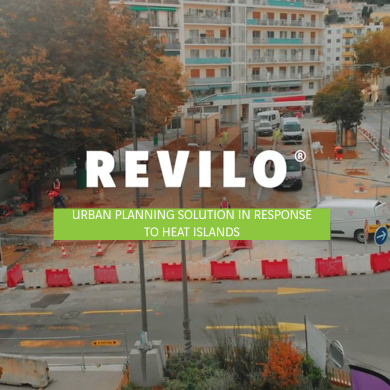
Revilo®: a VINCI Construction solution, France
Determined to help local authorities tackle these challenges, Revilo® (VINCI Construction) designed a development solution for creating urban cool islands. Revilo® combines four approaches: increasing plant cover to create shading, channelling rainwater towards green spaces, restoring soil for its ability to store and allow water to seep through, and choosing light, permeable surfaces.
Faced with an increasingly unpredictable climate, the race against time has already started. These diagnostic and prevention tools are defining the outline of a new approach that prioritises anticipation over reaction. Identify vulnerabilities, prevent risks and repair the damage: this sequence is key to shielding cities and communities against the effects of climate change and working together in improving our resilience.
Subscribe
Stay tuned : receive our newsletter
Every quarter, discover new articles, exclusive features and experts' views delivered straight to your inbox.
Most viewed
Explore more
Marina Lévy - Companies at the heart of ocean conservation issues
Marina Lévy, oceanographer, research director at the CNRS and ocean advisor to the president of the French National Research…
Building with and for nature
Whether creating barrages, stripping away topsoil, cutting down trees or digging channels, humans have spent thousands of…
Bridging the construction gender gap: paving the way to a career in industry for women in Colombia
In 2025, the Ruta 40 consortium led by VINCI Construction Grands Projets completed work on widening and upgrading the Bogotá…
